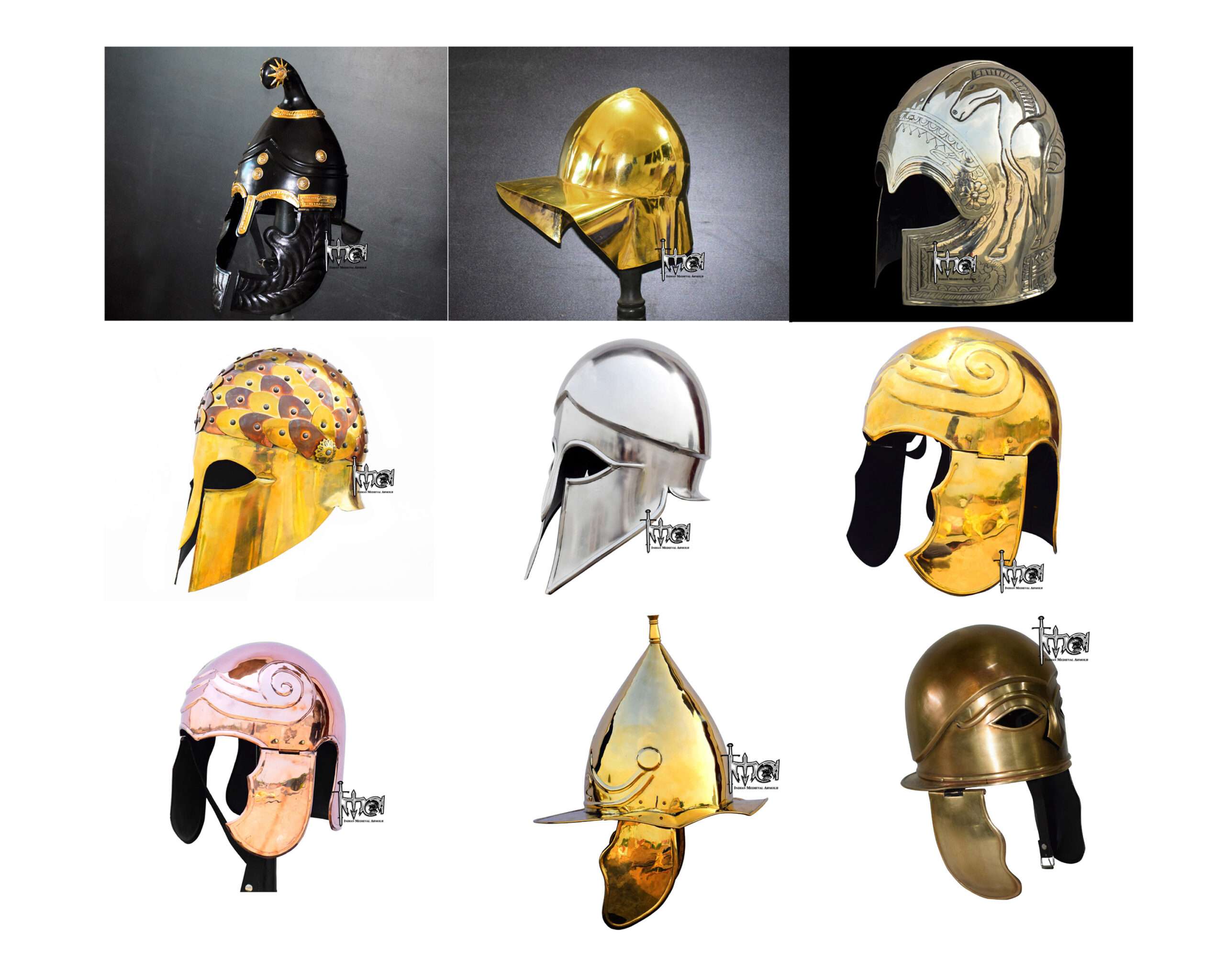The Ancient Greeks were famous for their suit of armor. While their panoply changed over the centuries, there was one piece of armor which can be found in present; the Ancient Greek helmets. Helmets were an important part of a warrior’s armor. It evolved over the time to meet the needs of the battlefield and appeal to the taste of Greek warrior. Visually compelling, yet ultimately served the purpose to provide protection on the battlefield, these are the different types of Ancient Greek helmets found throughout the Mediterranean.
The First Greek Helmet Existed:-
Helmets certainly existed in Bronze Age but too few have survived like Boar Tusk helmet. Later on Kegel helmet came in existence as an earliest Ancient Greek helmet as per archaeological record. Kegel type helmets were constructed out of several bronze segments and these segments were separately cast and then bent and riveted together.
Type oF Greek Helmets And Their Origin:-
In attempt to overcome the shortcomings of the Kegel type helmet resulted in two new types of Ancient Greek helmet. The first one of these was the Illyrian type which emerged in the 7th Century BC. The other type helmet was the Corinthian type. These helmets quickly spread throughout the Mediterranean world during Classical Antiquity. In the first decades of the 6th Century BC, the Corinthian helmet achieved its classical form.
During the second half of the 6th Century BC, Greek armies began to incorporate more cavalry and lightly armed troops into their ranks. As a result, it was necessary for soldiers to have a better perception of the battlefield. The result was the Chalcidian helmet which restricted the senses less than the Corinthian helmet but provided more protection than the Illyrian helmet.
An Ancient Greek helmet known as the Phrygian Helmet or Thracian helmet type developed from the Chalcidian helmet sometime in the late 6th Century BC. These helmets copied the forward-leaning felt shepherd’s cap. However, these helmets appear to have been found almost exclusively in ancient Thrace, an area which today consists of parts of Greece. It is distinguished by its large forward-leaning crest, which was originally a separate piece riveted together.
Few examples of the Ancient Greek helmet known as the Attic type have survived to the current day. This type of helmet first developed in the latter half of the 5th Century. The Attic helmet was often made of iron rather than bronze. Attic type is close-fitting and highly varied. Their distinctive features include a pediment over the brow and an elongated visor. They also have a crest attachment running from the back of the helmet, which terminates at the front, hinged cheek pieces with an anatomical form, and a neck guard that conforms closely to the neck while leaving an opening for the ear.
The Ancient Greek helmet known as the Boeotian helmet emerged sometime in the Fourth Century BC. As with the Attic helmet, several surviving Boeotian helmets were made from iron, so many may have been lost to corrosion. Like the Corinthian helmet, the Boeotian helmet was also mentioned in the ancient sources and still known by its correct ancient name. Boeotian helmet is far more open, providing a cavalryman with an unparalleled field of view.
Pilos helmets were the simplest type of Ancient Greek helmet and seem to have originated in the mid-Sixth Century BC. Since Pilos helmets were so simple to make they were popular with armies throughout the Hellenistic world. Ancient Greek helmets of the Pilos type consisted of nothing more than a simple upright conical form. thers featured hinged cheek pieces and elaborate crest attachments such as wings and horns.
From Where to buy Greek Helmets :-
Indian Medieval Armour offers a wide range of historical correct greek helmets replicas for history lover. our offered greek helmets are customized according to costumer need and available at very affordable price range. Visit our website to get more details and to buy them.


